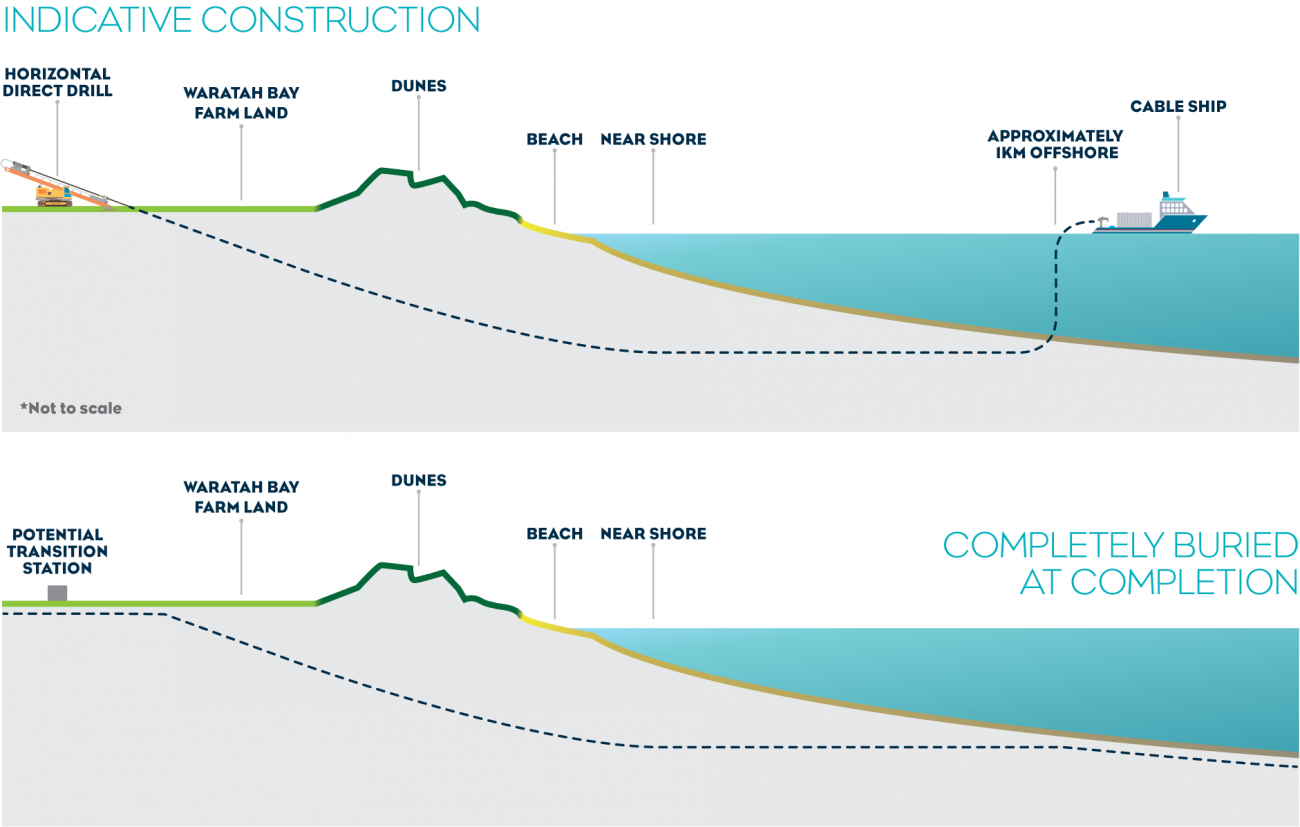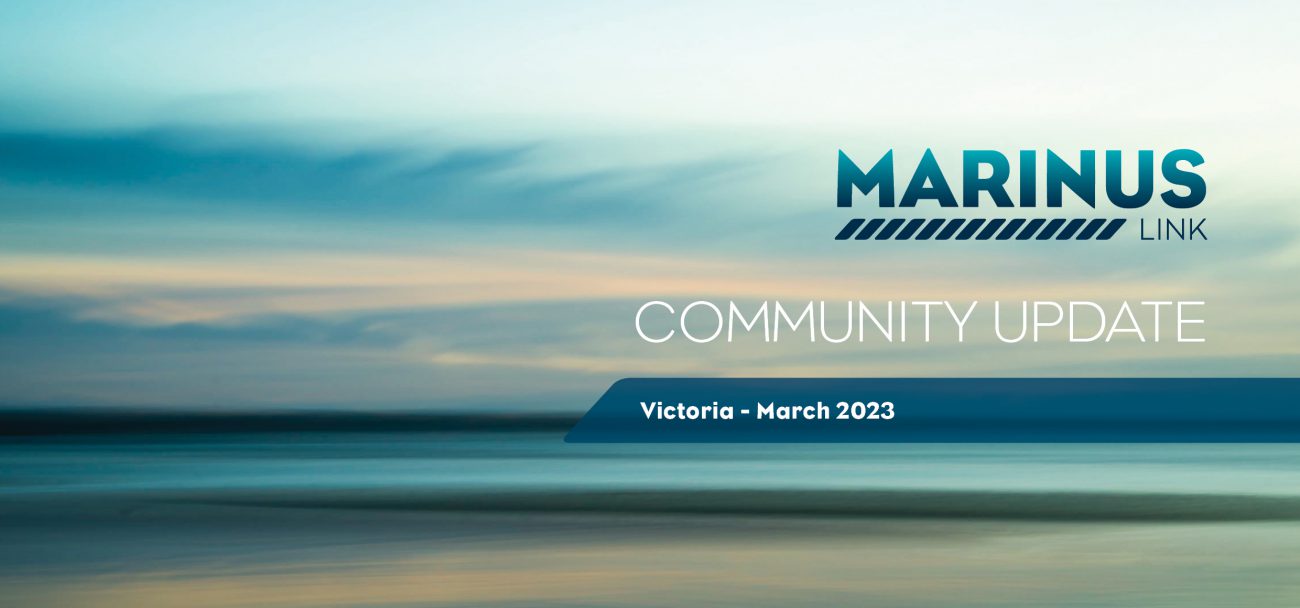
Engaging with you is key to our project
Marinus Link is a complex project which must go through environmental assessment and planning processes. Key to progressing this work is our engagement with the community.
Marinus Link is required to produce an Environmental Impact Statement (EIS) under Commonwealth legislation and an Environmental Effects Statement (EES) under Victorian legislation.
Over March and April, we will be hosting drop-in sessions across the region and online. We will have experts, maps and materials designed to help you understand our project and the assessment and planning processes.
Your feedback from these sessions is important and will be incorporated into our EIS and EES and help shape the guidelines for our project’s construction and operations.
To find out more about the approvals process, go to:
marinuslink.com.au/environmental-approvals.
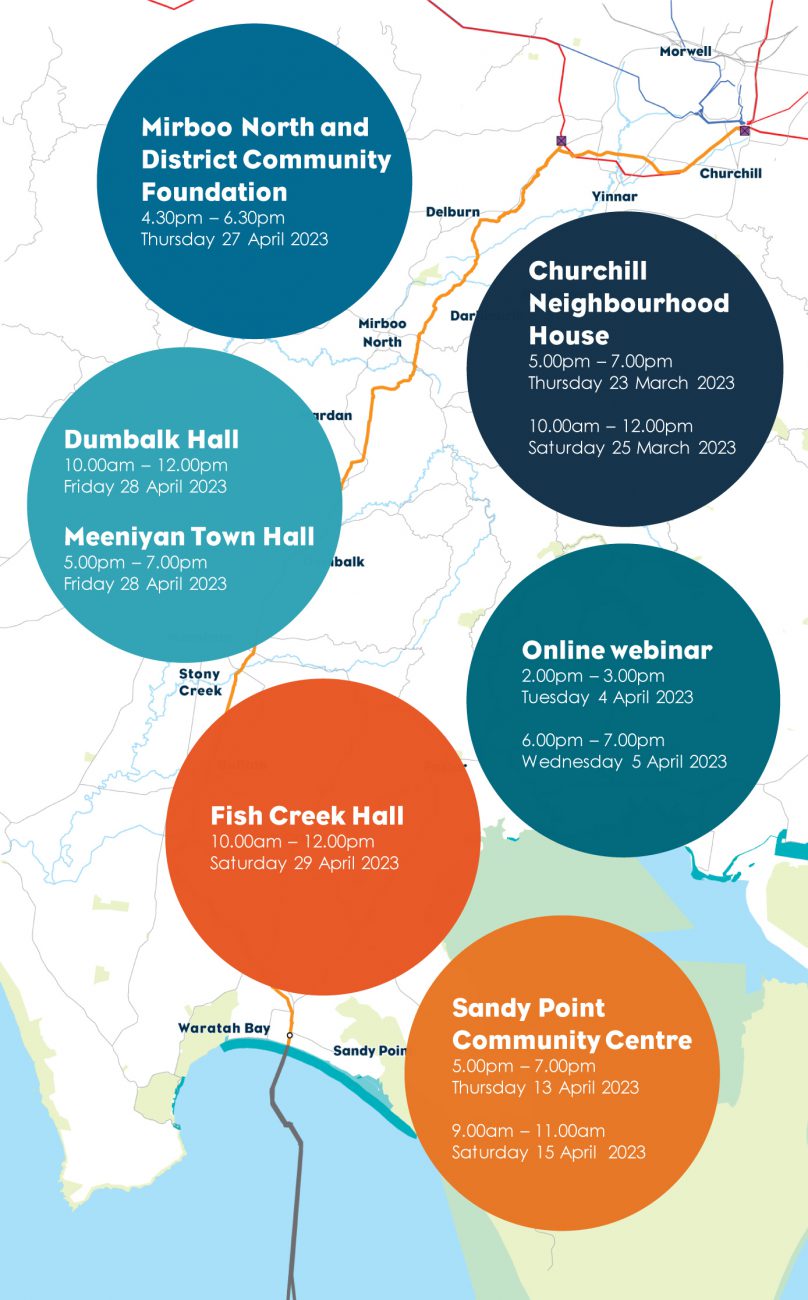
Funding agreement signals major project milestone
The Australian, Tasmanian and Victorian governments signed a letter of intent for the joint ownership for the delivery of Marinus Link.
The announcement answered the big question around who is paying for Marinus Link and secured the interconnector as a critical transmission project for the nation.
The project’s construction funding is part of the $20 billion ‘Rewiring the Nation’ plan to transform the country’s electricity grid.
Marinus Link releases tenders for major equipment
Another significant milestone for Marinus Link was the release of the international tenders for the design, manufacture, construction and commissioning of key equipment.
The tender process requires international companies to work with Australian and local suppliers and businesses, which means jobs for locals in both Victoria and Tasmania, as well as increased economic activity as a direct result of the project. This process will ensure we have every possible chance of securing the supply of critical equipment ahead of a final investment decision, scheduled for December 2024.
Marinus Link CEO passes the leadership baton
We welcome Caroline Wykamp as the interim CEO of Marinus Link.
Caroline is an authority in energy markets with over 25 years’ experience spanning wholesale, retail and renewable energy markets. She has held senior positions with large commercial organisations including Hydro Tasmania, Origin Energy and Jemena.
Upon announcing her resignation, outgoing CEO Bess Clark said the timing was right to pass the leadership baton.
“I’ve given the decision a huge amount of thought. I feel very comfortable that it’s the right time for me and for the business to move to new leadership to take the project forward into its next phase,” Bess said.
“I’m very proud of all that our team has achieved progressing Marinus Link’s feasibility, business case assessment and design and approvals phases, on the pathway to deliver low-cost, reliable and clean energy for generations to come.”
Caroline will be supported by Bess for her first three months to ensure a complete handover.
“I will continue to be a strong supporter of Marinus Link in the years ahead, as the team works to unlock Australia’s renewable energy future,” Bess said.
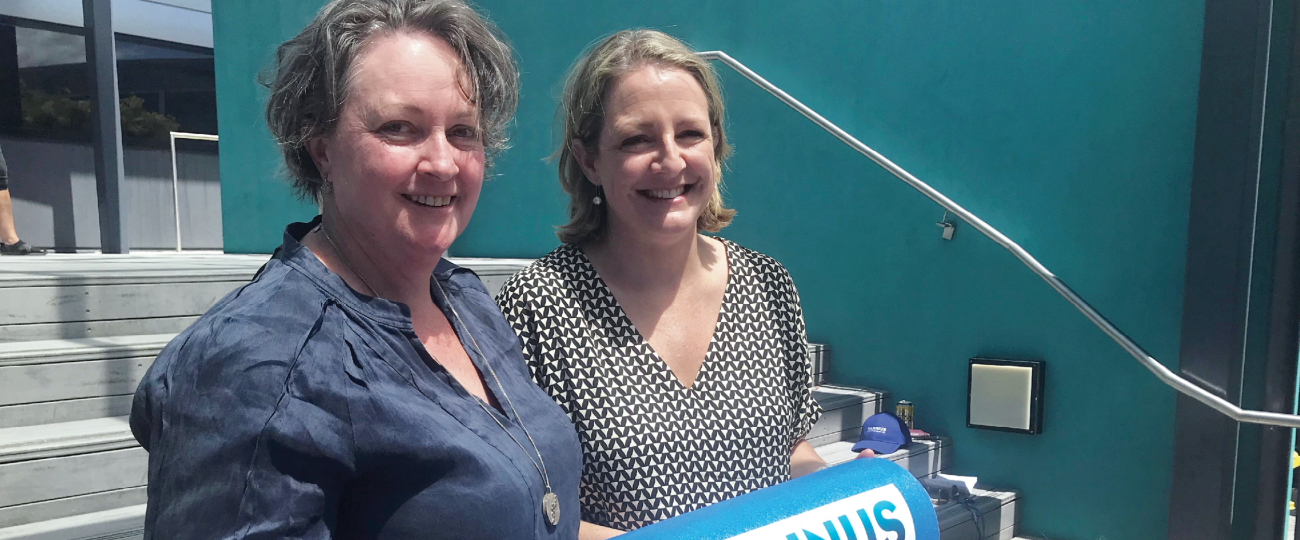
Out and about
The second half of 2022 saw the Marinus Link engagement team hosting webinars and getting out in the community.
First off we held two online webinars to walk people through the environmental assessment guidelines for Marinus Link and how they could provide feedback (see our Environmental Approvals page at marinuslink.com.au/environmental-approvals for more information).
From there we made for the coast, hosting drop-in sessions in Sandy Point, Meeniyan and Foster.
Hot topics included any relationship to offshore wind projects (Marinus Link is separate to offshore wind proposals), the shore crossing at Waratah Bay, the route selection process, construction and environmental impacts, and jobs and opportunities.
Thank you to everyone who took the time to come along – we enjoyed answering your questions and sharing information about our project!
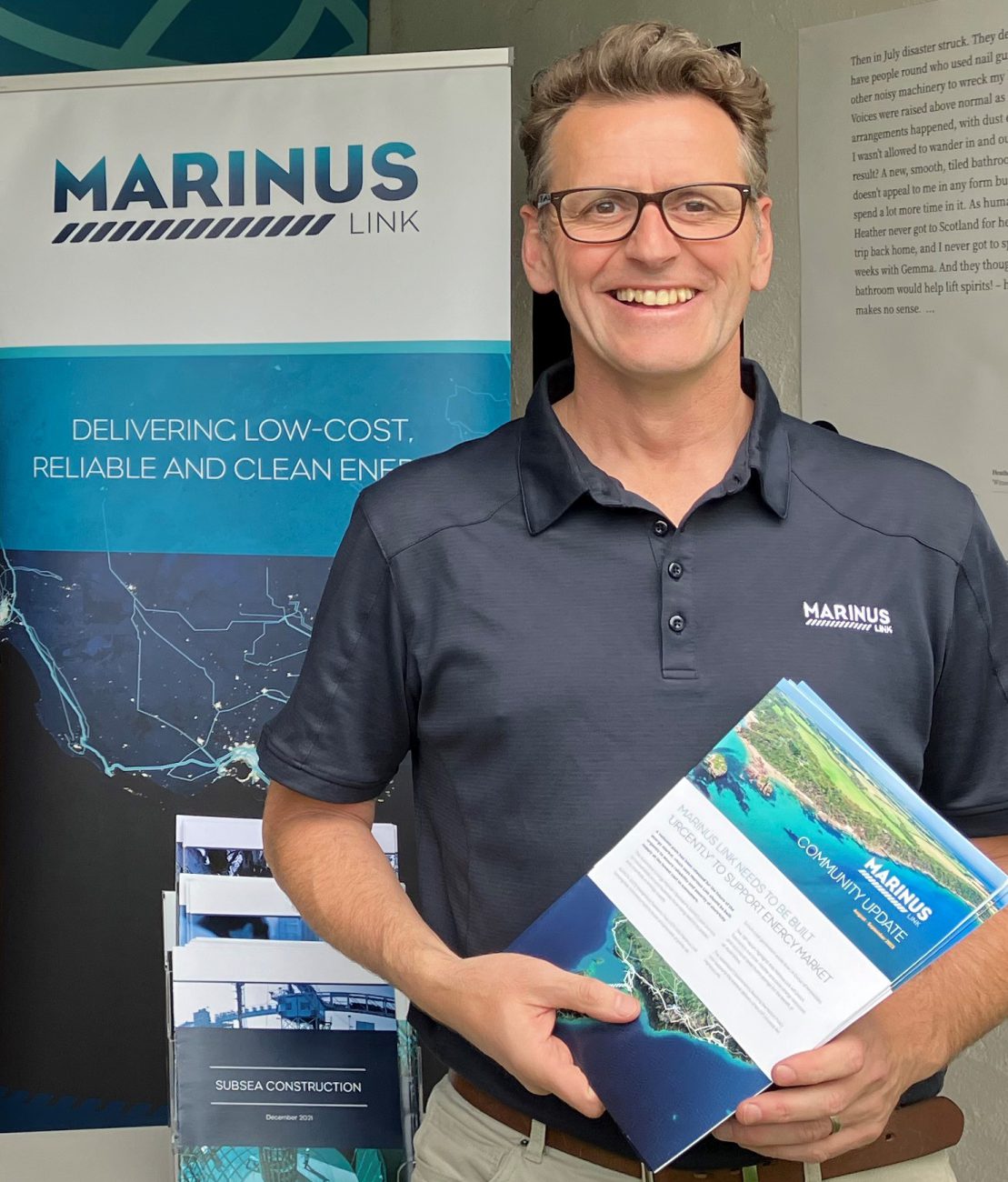
Upcoming engagement opportunities
Churchill drop-in sessions
When: Thursday, 23 March – 5:00-7:00pm
When: Saturday, 25 March – 10:00am-12:00pm
Where: Churchill Neighbourhood Centre 9/11 Philip Parade, Churchill
Webinars
When: Tuesday, 4 April – 2:00-3:00pm
When: Wednesday, 5 April – 6:00-7:00pm
Where: Online – visit our website to register: marinuslink.com.au/engagement
Sandy Point drop-in sessions
When: Thursday, 13 April – 5:00-7:00pm
When: Saturday, 15 April – 9:00am-11:00am
Where: Sandy Point Community Centre Church Parade, Sandy Point
Mirboo North drop-in session
When: Thursday, 27 April – 4:30-6:30pm
Where: Mirboo North and District Community Foundation 96 Ridgway, Mirboo North
Dumbalk drop-in session
When: Friday, 28 April – 10:00am-12:00pm
Where: Dumbalk Hall 29-31 Farmers Rd, Dumbalk East
Meeniyan drop-in session
When: Friday, 28 April – 5:00-7:00pm
Where: Meeniyan Town Hall 97 Whitelaw St, Meeniyan
Fish Creek drop-in session
When: Saturday, 29 April – 10:00am-12:00pm
Where: Fish Creek Hall 13 Falls Road, Fish Creek
There is no need to RSVP to any of the drop-in sessions, however you will need to register to access the webinars. Email team@marinuslink.com.au.
Aboriginal Advisory Group
We recognise and respect the history, culture and stories that Aboriginal Peoples bring to our communities, and acknowledge that they have a profound spiritual connection to the lands and waters on which the project is proposed to be built.
In the Gippsland region, Marinus Link is working closely with Traditional Owners. We have established a forum where representatives of the Boonwurrung Land and Sea Corporation, Bunurong Land Council Aboriginal Corporation and Gunaikurnai Land and Waters Aboriginal Corporation come together to discuss the project.
The Marinus Link Aboriginal Advisory Group facilitates ongoing conversations between Traditional Owners in Gippsland related to the impacts and opportunities of the project.
It provides Marinus Link with valuable information and advice regarding issues pertinent to Aboriginal Peoples living in Gippsland, including matters related to environmental approvals and social licence processes.
The group also provides opportunities for improved cultural exchange, understanding and capacity building.
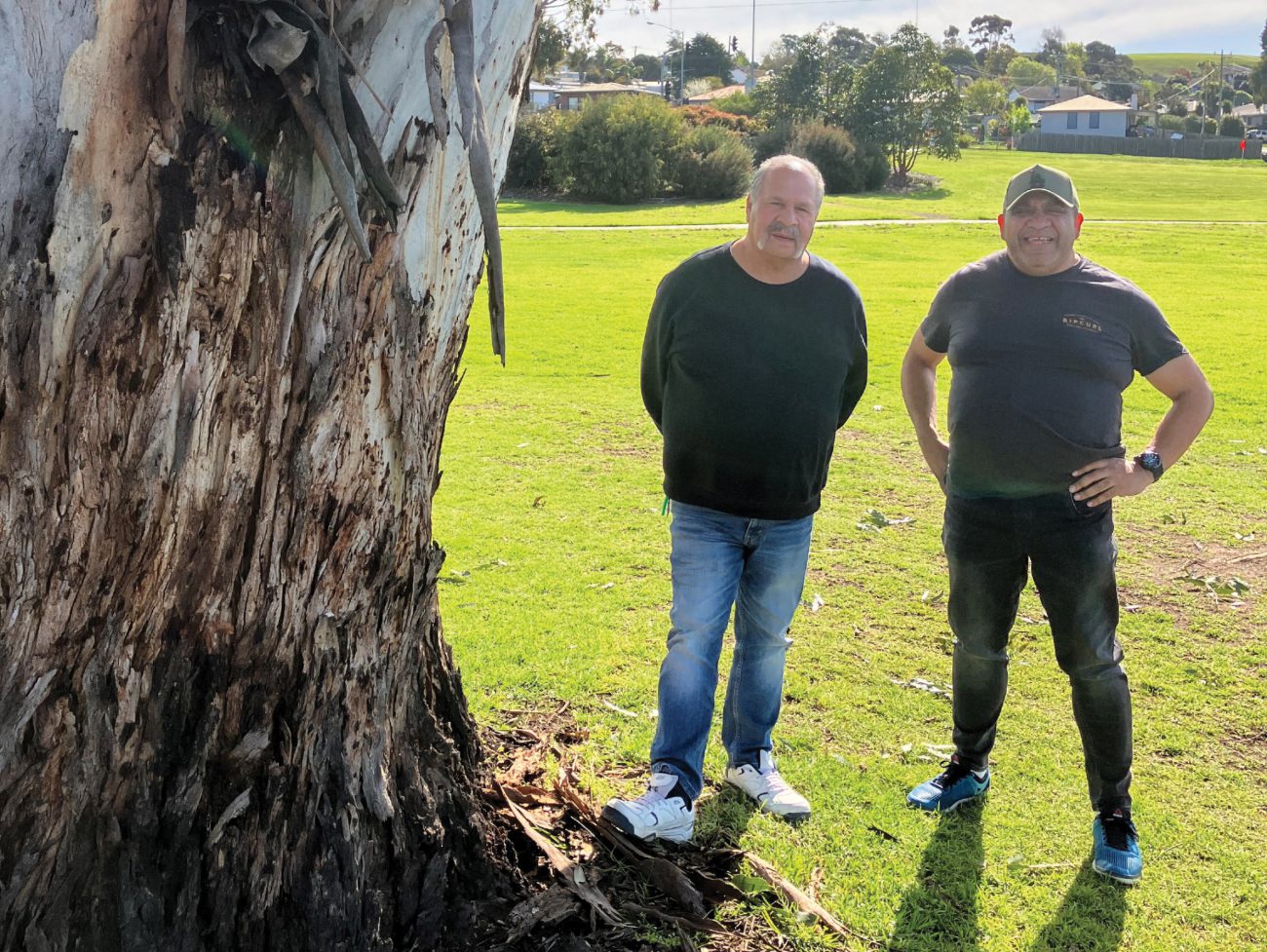
Recent and Upcoming surveys in Victoria
Our ecology teams have been busy with targeted fauna surveys along Marinus Link’s proposed cable route. These include day and night surveys for animals such as the growling grass frog, greater gliders, masked owls, crayfish and waterbirds.
The team will continue their fieldwork in Gippsland over the coming months.
As part of the project’s environmental assessments, the survey team did a landscape and visual assessment of the proposed route in November 2022. To complete this activity, the team travelled along the length of the route, capturing images from publicly accessible locations and properties where we have access agreements. The data from the survey will be used to identify potential impacts from the project.
Geotechnical investigations will continue over the coming months. For more information visit our website marinuslink.com.au/field-surveys-and-investigations-2 .
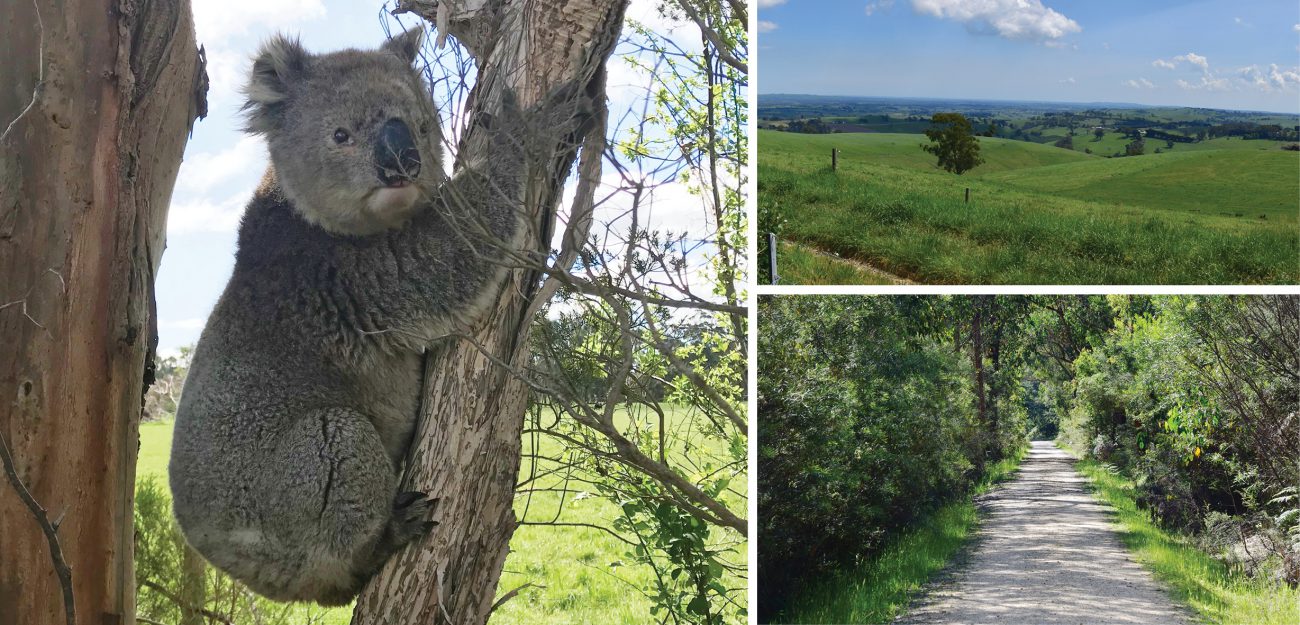
Survey spotlight: Cultural Heritage surveys
We’ve engaged highly qualified and experienced heritage specialists to conduct cultural heritage surveys. Our surveys aim to identify Aboriginal and cultural heritage sites and areas of potential archaeological sensitivity along the project alignment.
Throughout all survey work, we work with Registered Aboriginal Parties (RAPs), Traditional Owners and Community.
The results of these surveys will inform Marinus Link’s final route design and construction methods. They will also help us to identify and mitigate potential project impacts.
Where historical artefacts are identified, the items will be avoided and protected in consultation with the land owner. Following this, an agreed plan between the landowner, Traditional Owners and Marinus Link will ensure their ongoing protection and possible relocation.
The below images were taken during cultural heritage surveys in October 2022. After the surveys, the team carefully rehabilitated the site.
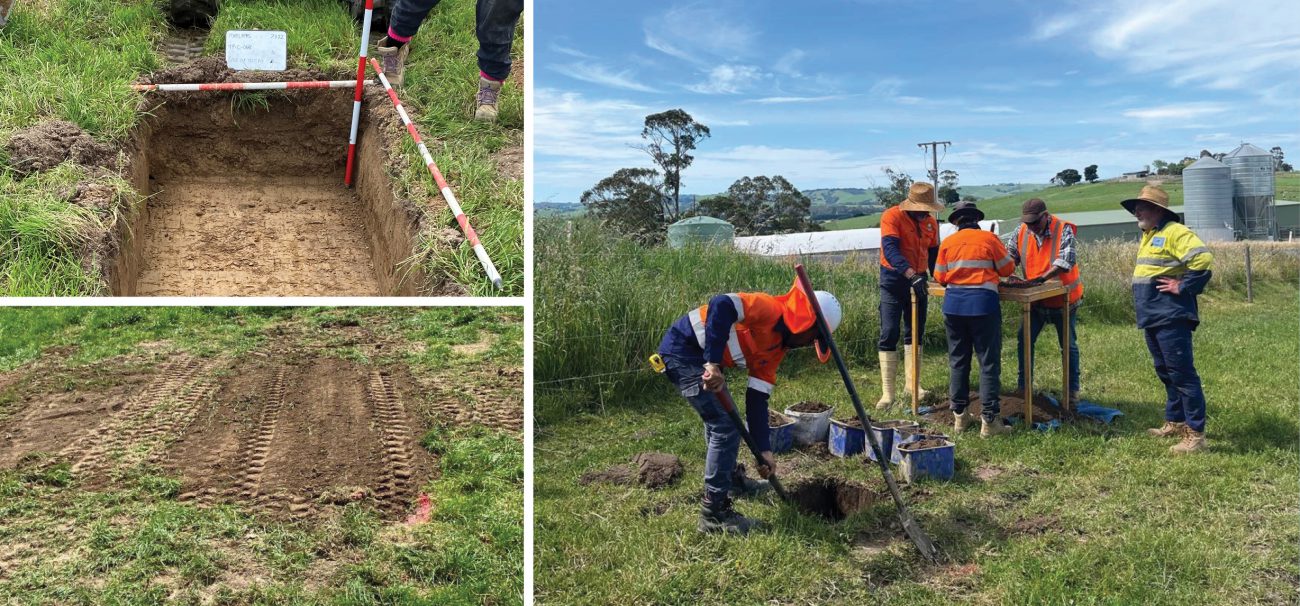
Answering your questions
How will Marinus Link be crossing the shore in Waratah Bay?
The shore crossing is proposed to be constructed using horizontal directional drilling (HDD). HDD is an underground construction method which uses a horizontal directional drill to create a bore hole in places trenching is not suitable.
To construct the shore crossing, a temporary drill pad of crushed rock will be laid. From the pad, a drill will bore into the ground at an angle, working toward the water. The bore hole will extend into Bass Strait for 1 km or to a water depth of around 10 m, whichever is safer.
This method means the shore crossing can be constructed with minimal disruption to the dunes and the beach. It will also assist in reducing impacts on any environmental and cultural heritage values identified in the vicinity.
How does Marinus Link relate to renewable energy proposals, such as offshore wind?
Marinus Link is a key electricity transmission project that is not linked to specific electricity generation projects. However, Marinus Link’s development will unlock approximately $7 billion in additional investments in wind, solar and hydro developments.
